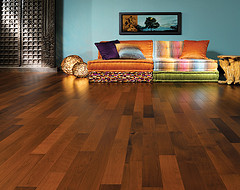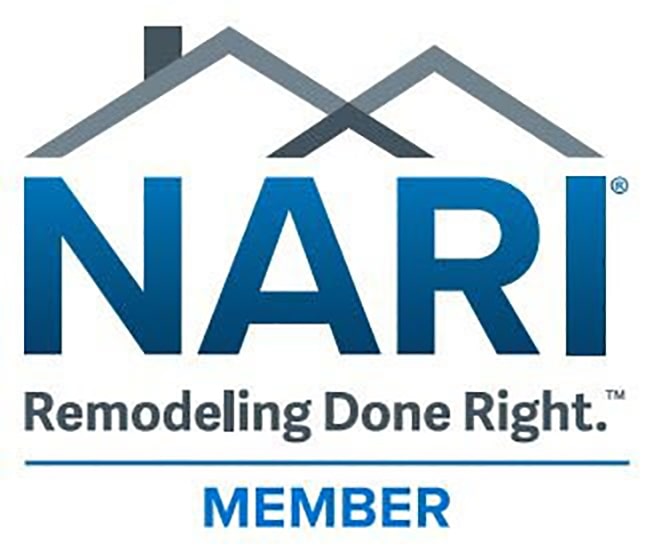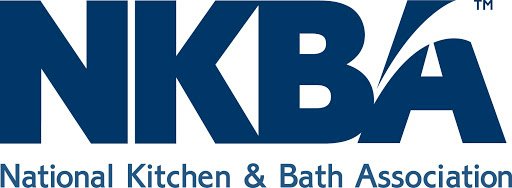There are many home improvement projects that can dramatically change the overall feel of a room. Replacing your existing flooring is one of many that can improve the look of your space. There are many choices for new flooring such as carpet, tile and laminate, but perhaps none are as popular right now as hardwood flooring.
Hardwood flooring was and still is a great choice for flooring. In fact, if you live in an older home, there is a good chance you might find hardwood flooring below your carpeting! Traditional hardwood floorings was made out of strips of solid wood, usually oak (along with other species of wood), and was sanded and finished in place after installation. While that type of hardwood flooring is still installed today, there are other types to consider and a wide variety of species and finishes available.
Solid hardwood flooring is still a great option, especially for above grade options such as on the main and second floors. Solid hardwood has the advantage of being able to be sanded and refinished an unlimited amount of times. And, if you are remodeling and renovating your Indianapolis home, it is easy to patch and fill-in areas where walls were removed. Then, after work is complete, the entire floor (both old and new) can be sanded and refinished to match each other, making the repairs seamless.
 However, there are some draw backs. First, solid hardwood flooring is susceptible to seasonal temperatures changes. The wood can expand and contract depending on the conditions within the home. It can warp and buckle when exposed to moisture, so when Johnny spills his glass of juice, be sure to quickly clean up the mess! This also makes it a non-choice for use in basements.
However, there are some draw backs. First, solid hardwood flooring is susceptible to seasonal temperatures changes. The wood can expand and contract depending on the conditions within the home. It can warp and buckle when exposed to moisture, so when Johnny spills his glass of juice, be sure to quickly clean up the mess! This also makes it a non-choice for use in basements.
New technology in hardwood flooring has added a lot of benefits to hardwood flooring. Installation is a lot more flexible, with more choices than the standard, nail-down installation used in the past. Now, hardwood flooring can be glued down, making installation over concrete slabs possible and the properties of the product even allow installation in basements!
 These newer products are typically known as engineered hardwood floors. Engineered hardwood flooring is manufactured with structural plywood layers, with a solid wood veneer wear layer. The ply layers make the flooring less prone to movement with the changes of the seasons and humidity levels. Engineered wood will resist warping and cupping and are a lot more forgiving when exposed to moisture. Although you should still clean up spills as soon as possible!
These newer products are typically known as engineered hardwood floors. Engineered hardwood flooring is manufactured with structural plywood layers, with a solid wood veneer wear layer. The ply layers make the flooring less prone to movement with the changes of the seasons and humidity levels. Engineered wood will resist warping and cupping and are a lot more forgiving when exposed to moisture. Although you should still clean up spills as soon as possible!
There are many species to choose from and many different sizes that can be selected based upon the look, feel and size of the room. Wider hardwood floor planks are a good choice for larger rooms, while narrower strips work better in smaller areas. Go to your local flooring company and ask about obtaining flooring samples so you can compares wood species, stain colors and width with the room you are considering on completing.
Engineered hardwood floors should wear well over time. The staining and finishing is much more consistent in a controlled, factory environment. Unlike solid hardwood flooring, most engineered prodcuts carry warranties that can reach 25 years or more! And yes, engineered floors can be sanded and finished just like standard, solid strip wood flooring. However, the amount of times a product can be refinished is dependent on the thickness of the wear layer.
All in all, hardwood flooring is a great option for many areas of your home. From kitchens, to family rooms and even bedrooms, nothing beats the richness and warmth of real wood flooring! Sure, solid wood is a great choice, but newer products offer a lot of benefits. Consult with your local flooring company on the best choice for your home.
**All pictures courtesy of Mirage Floors**
For other useful information for your home, great household tips, renovation and removel advice, check out some of our guides, available by clicking here!














